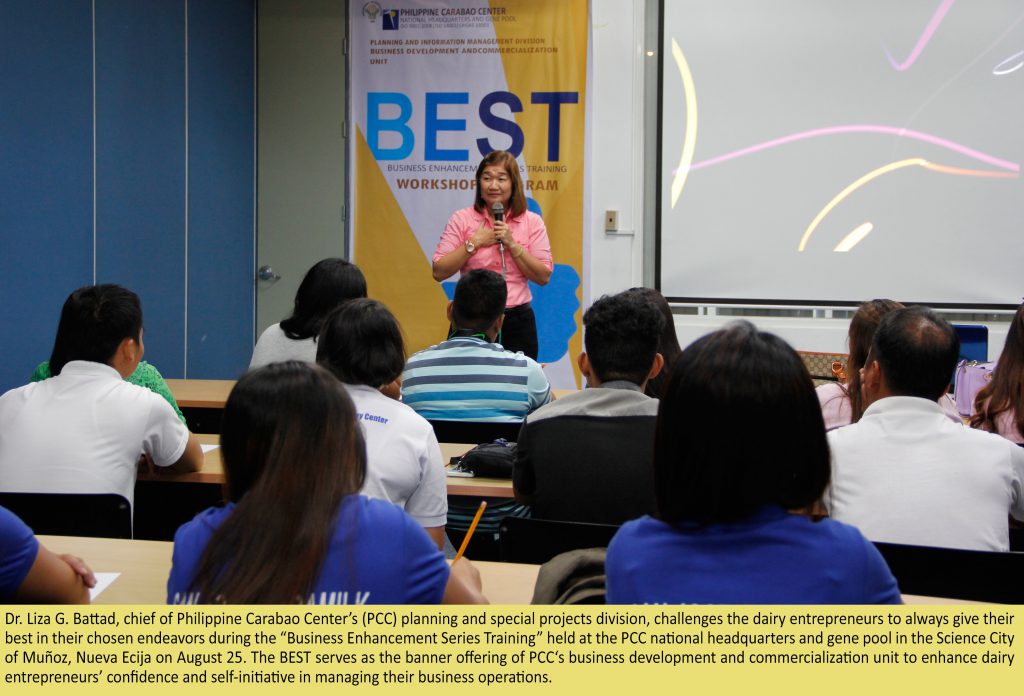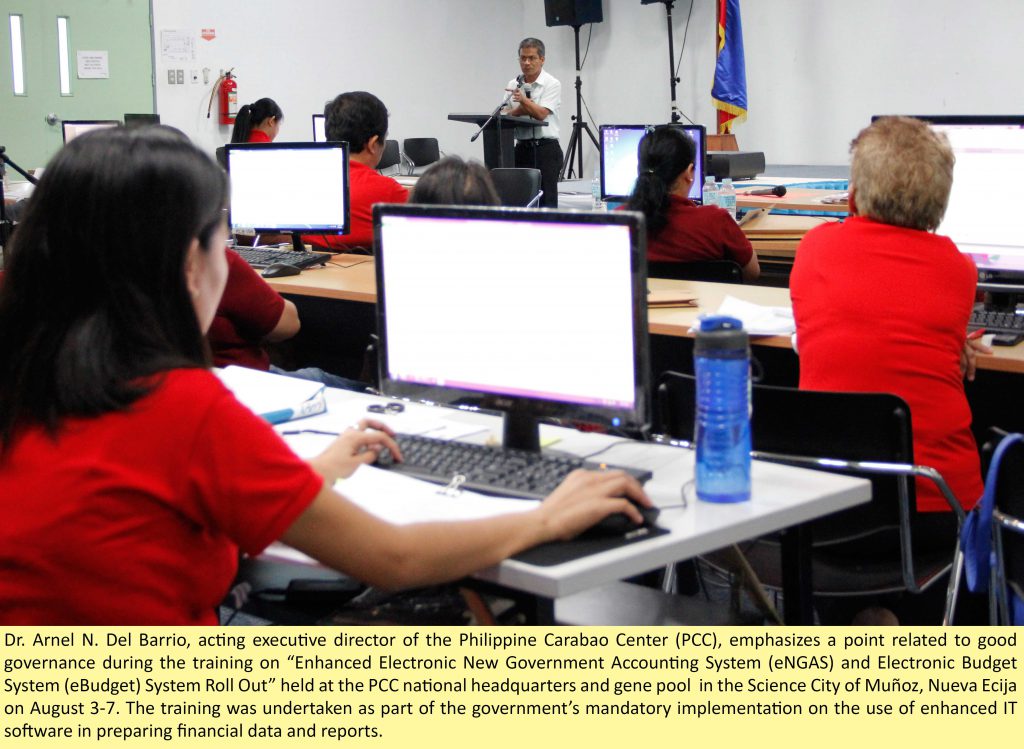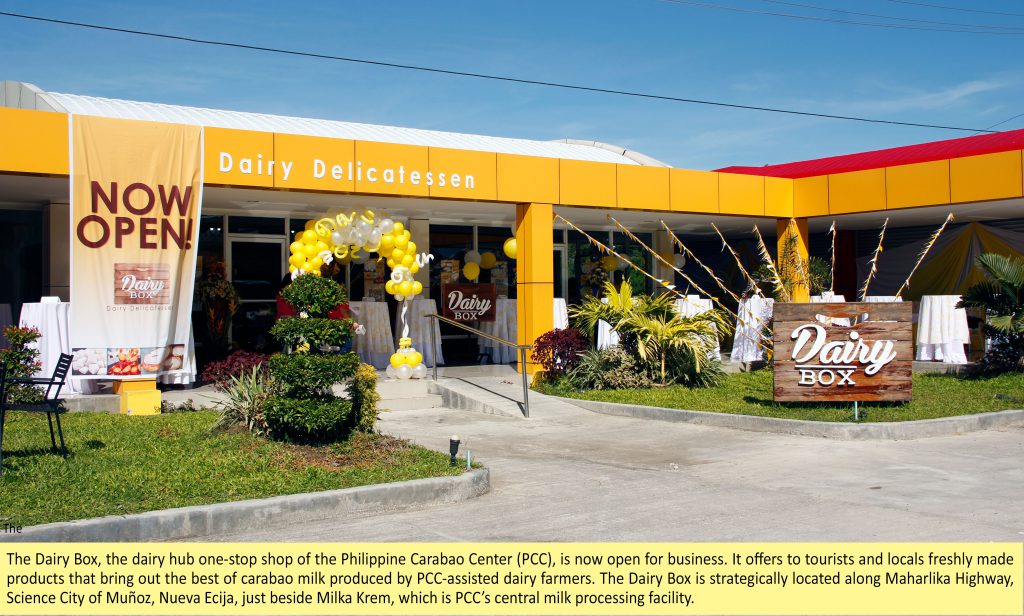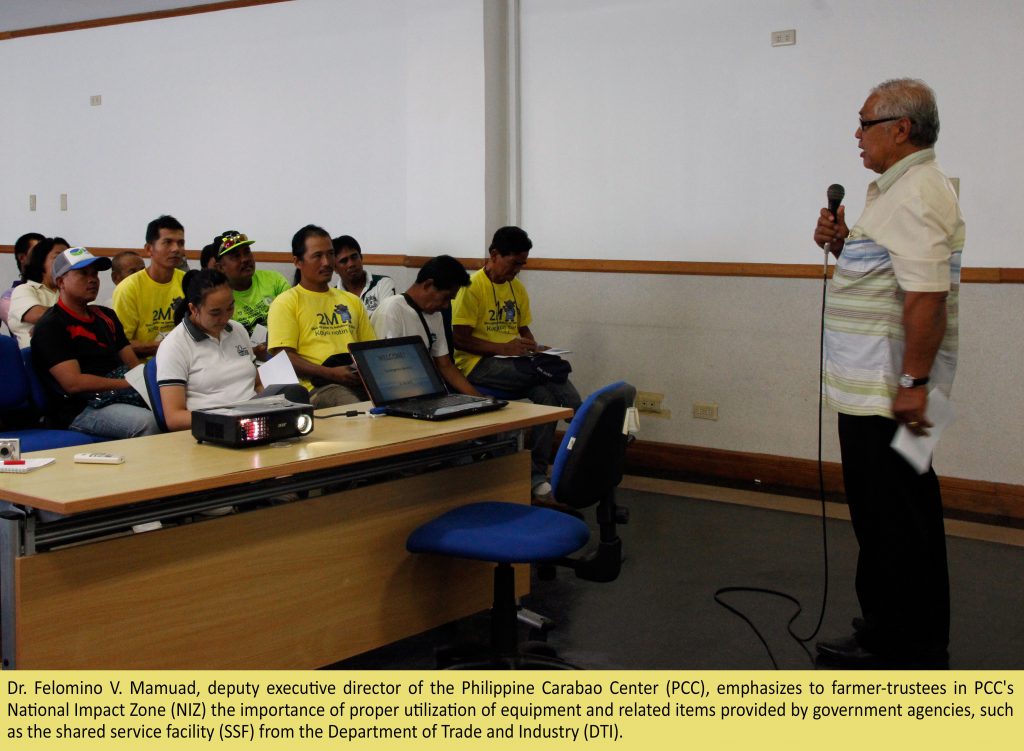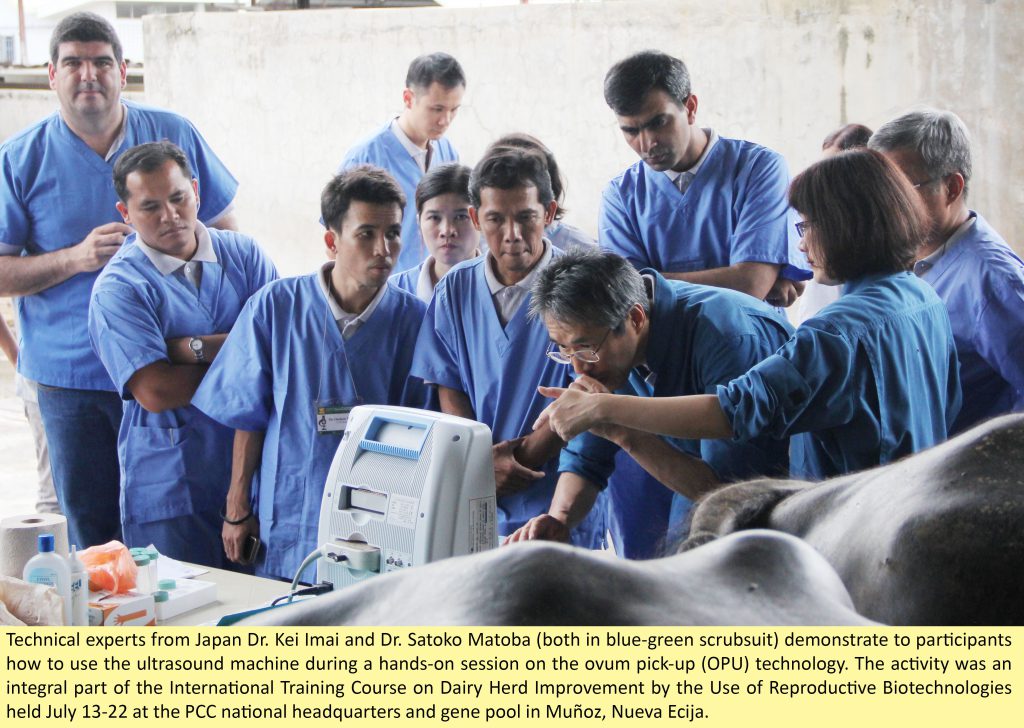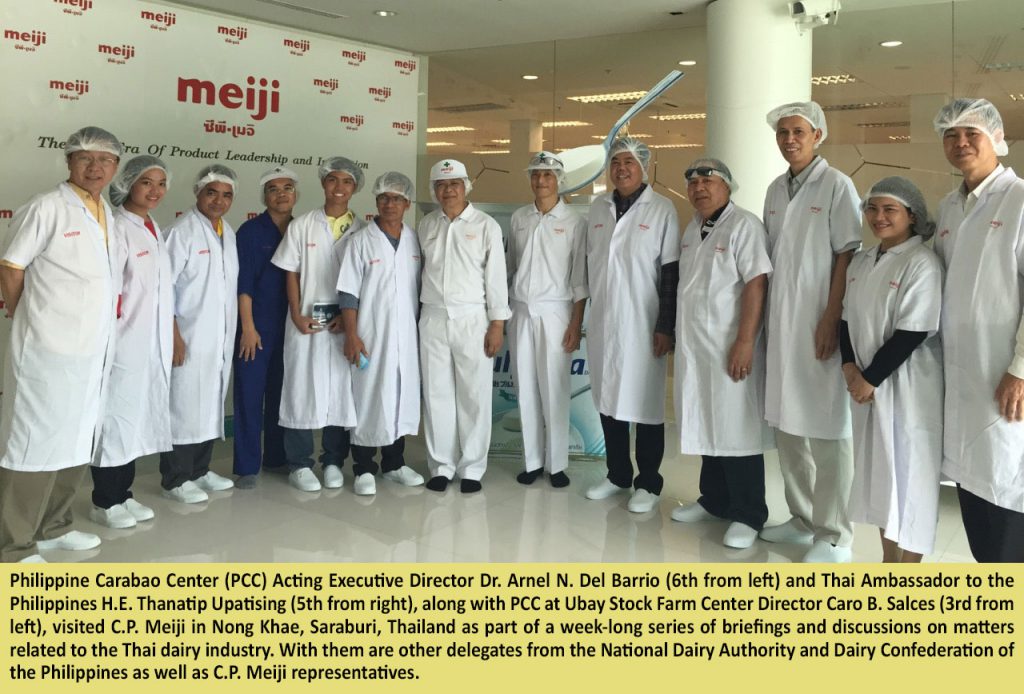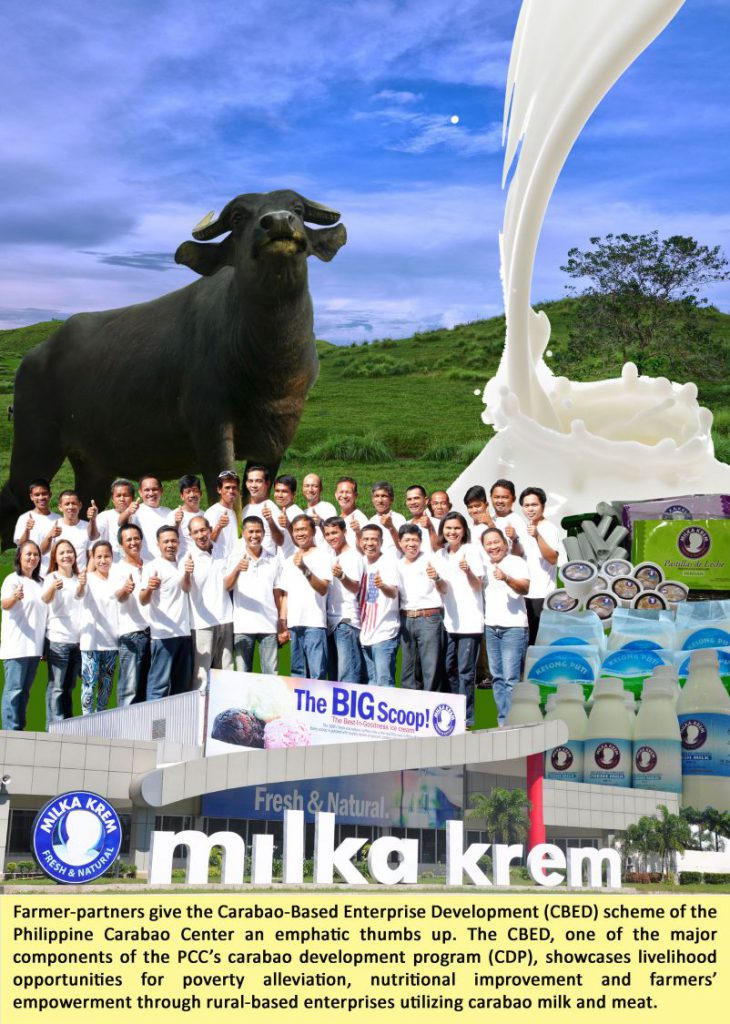Farming families, who see the color of money only at the end of every harvest season, now have access to daily cash from milk sales, thanks to the carabao-based enterprise development (CBED) program of the Philippine Carabao Center (PCC).
The continuing efforts of PCC in upgrading the breed of native buffaloes by transforming them from being mere inputs in farming activities into major sources of income has opened the windows of more livelihood opportunities for farmers and their families.
The CBED is one of the major components of the PCC’s carabao development program (CDP). It showcases dairy carabao-based livelihood opportunities designed to address the continuing concerns of poverty alleviation, nutritional improvement and farmers’ empowerment.
Furthermore, it is a program implemented to promote the economic benefits that the carabaos offer: earnings from milk, meat and hide. The milk, particularly, contributes significantly to the improvement of the nutritional status of the farming families and at the same time creates ready market for the growth of carabao-based dairy enterprises.
CBED program
According to Ericson Dela Cruz, national CBED coordinator, the CDP is aimed at helping participating carabao owners, farmers’ cooperatives, and their federation in creating additional sources of income to ensure at least a 25% increase in farm income per year; and helping mobilize or building up a critical mass of Philippine carabaos, crossbreds, and murrah buffaloes for commercial-scale carabao-based enterprises in communities within identified dairy zones in the country.
It also establishes or helps put up appropriate CBED models; spearheads formation of development partnerships among small-hold carabao owners, support service providers, technology holders, processors, marketers, and consumers; and provides or facilitates provision of support services for capacity development of primary stakeholders, including development “conduits” relative to effective implementation.
Key actors involved in program implementation include individual partner-farmers, farmers’ cooperatives and associations, PCC’s 13 regional centers, partner-local government units and non-government organizations.
Dela Cruz added that when a farmers’ cooperative or association applies for the program, it has to undergo screening and meet certain qualifications or requirements. They must fully understand and appreciate the program’s vision, mission, goal and objectives; must have the ability to function actively as stipulated in its cooperation document and by-laws; and be able to come up with a coop-level carabao-based enterprise (CBE).
Moreover, the farmers’ cooperative or association is expected to collect from the members the agreed membership dues for the coop’s Herd Build-Up Trust Fund and deposit the collection in a bank, with the PCC as co-signatory; be able to collect, consolidate, and submit the members’ monthly record of their respective CBEs to the PCC; participate in monitoring and evaluating the members of the CBEs; ensure that all required counterpart contribution from farmer-members are in place or secured; collect milk produce of its members and sell (through the Federation) as raw milk or as processed milk products, and be a member of good standing of a federation, if there is any.
The small-hold farmers are encouraged to join or establish an accredited cooperative, association and federation to strengthen their position in a complex market system.
When everything has been put in place, they are assured of enjoying greater benefits as they already understand the essentials for quality products, competitive prices, good packaging, efficient distribution system, and capitalizing on the highly urbanized areas populated by high-income families.
Similarly, support for the establishment of processing facilities for production and marketing of quality competitive products is a crucial factor. Thus, enterprise development models are established in impact zones to showcase production, postharvest, processing, and marketing and distribution of various products.
Enterprise models
The PCC, in its 21 years of service, has now gained wider ground as it already has a number of enterprise development models.
A dairy buffalo farmer cooperative in Sibut, San Jose City named Eastern Primary Multi-Purpose Cooperative (EPMPC) has gained recognition for its endeavors in dairy enterprise development. The group became a cooperator for the 25-Cow Dairy Module Program of PCC in 2000.
In 2001, the EPMPC started to produce milk and eventually became the major supplier of carabao’s milk in San Jose City starting in 2004 and up to the present time. It also supplies the milk requirement of the “Alay sa Bata” feeding program of the local government unit in areas with malnutrition incidence.
Currently, the EPMPC has a total herd of more than 200 dairy carabaos and counts a membership of 48 active farmer-trustees. As of 2012, it had a total accumulated share capital of P255,413.50, total assets of P2,295,782.04 and an animal mortuary (guarantee) fund amounting to P349,680. Its total milk production amounted to 332,515.9 liters from 2002 to 2014, with corresponding sales value of P15,155,777.04. In 2013, it was considered as the top milk- producing cooperative in Nueva Ecija as it registered 176 liters of daily milk production. In 2014, it had a total gross sale of P256,628.5 in processed milk while P4,993,450.66 in raw milk, breaking the record of its previous years’ gross sales.
The EPMPC has its own milk collection center and micro processing plant with facilities that enable it to process its daily milk produce into different dairy products that are sold in San Jose City. Based on audited financial statements, this coop was able to generate a cumulative total of P748,086.92 from 2000 to 2013. The earnings were used in the operation of its micro processing plant.
In view of its unwavering efforts to promote the local dairy industry and its achievements in carabao-based dairying, the cooperative was given recognition as the best dairy buffalo farmers’ cooperative in the country during the PCC’s 21st founding anniversary.
Like EPMPC, the General Trias Dairy Raisers Multi-Purpose Cooperative (GTDRMPC) in General Trias, Cavite is also considered as one of the cooperative-based enterprise development models. Supervised by the PCC at University of the Los Banos, Laguna, the co-op has already set a high bar in terms of carabao-based dairy production for other emerging dairy cooperatives.
As the GTDRMPC continues to prosper, many residents of the town have been given additional livelihood opportunities. Its membership has grown to almost 200 from its original members of 44.
The co-op currently collects at least 250 liters of carabao’s milk daily from its members who have a combined animal holding of almost 250 head, of which close to 80% are crossbreds. The collected fresh milk is processed into various dairy products.
The GTDRMPC’s laudable performance has gained several recognitions and awards, one of which is the Department of Agriculture’s “Gawad Saka Award”.
Just as there are top coop-based enterprise models like the EPMPC and GTDRMPC, there also exist dairy farmers who are considered models for their noteworthy achievements. Three dairy farmers from different categories were recognized as best dairy buffalo farmers during PCC’s 21st founding anniversary in March 2014.
Arnold Cunanan of Simula ng Panibagong Bukas Primary Multi-Purpose Cooperative in Barangay Porais, San Jose City was cited as the best dairy buffalo farmer under the family module category. He has been a partner of PCC on buffalo dairying since 2009. Cunanan has exhibited his ability in taking good care of his dairy buffaloes. He converted his piggery farm into a carabao-based enterprise venture. His wife and children help him in the delivery of milk. They also assist him in record-keeping, feeding the buffaloes and cleaning the barns. Cunanan is one of the growing numbers of farmers who have an increasing carabao herd size through the adoption of new applicable technologies. Needless to say, he serves as a model dairy buffalo farmer to others.
Romeo Araña, a farmer-partner of PCC at Western Visayas State University in Iloilo, was chosen as the best dairy buffalo farmer under the small-hold category. He started backyard dairying in 2012 with a crossbred carabao, a cross between an albino carabao and a riverine buffalo.
Araña began milking his carabao after realizing there’s money to be made from milk production. The income from milk sales from the first lactation of his crossbred afforded him to renovate his house. On the second lactation of his animal, he was earning more than what he earned before delving into dairying, which afforded him to support his son’s annual tuition fees and weekly allowances. He likewise was able to reconstruct his house’s roofing.
In the semi-commercial category, Carlito Alfonso of the Eastern Primary Multi-Purpose Cooperative in San Jose City nailed the top award. His growing herd of 15 dairy buffaloes provide him with substantial earnings from milk sales and the sale of male calves. Aside from being a productive dairy farmer, he is also keen in adopting technologies promoted by PCC.
Strategic shift
One of the novel approaches of PCC in CBED is the dairy buffalo multiplier farm (DBMF).
The town of Javier in Leyte province holds the distinction of having the country’s first ever DBMF. It is supervised and monitored by PCC at Visayas State University, which covers Region 8 or the Eastern Visayas region.
The PCC’s DBMF program is aimed at improving efficiency in the multiplication and propagation of good quality dairy buffalo genetics that can be utilized in establishing a viable commercial buffalo-based dairy farm. In this manner, buffalo genetic sources can be widely spread and not limited to PCC.
“What does this multiplier farm mean to the town? It means we will have milk, so we will have income. We will have organic fertilizers from their manure. We will benefit a lot. I will prove, in front of everybody here, that it is not impossible to make farmers rich and we will achieve that,” Mayor Leonardo Javier Jr. emphatically said in his remarks during the awarding rites for the DBMF module held in November 2014 at Sitio Mapula, Zone II of the municipality.
The CBED program of PCC continues to gain ground in terms of providing livelihood opportunities to partner-farmers and in showing the way to the aspiring ones who want to share in the bounty offered by the program. In addition, the CBED contributes to the job creation efforts of the government.
“Employment generation during the period (2014) was broad-based, led by services and agriculture,” said Socioeconomic Planning Secretary Arsenio Balisacan.
In agriculture, Balisacan said, the problem has to do with the quality of employment, which is both seasonal and low-paying. He said this can be addressed by introducing non-farm employment opportunities during the off-season, such as value-adding activities, community-based employment program. The PCC’s CBED program is consistent with this pronouncement.

